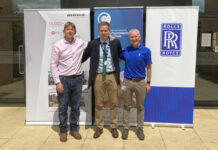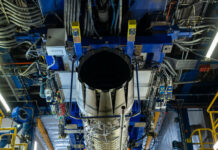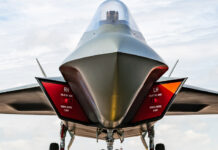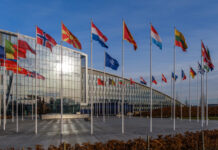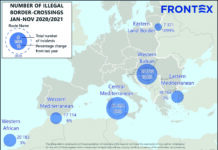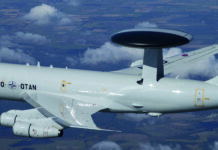FCAS/SCAF and TEMPEST will continue to be among the most important European cooperative programmes for the coming decades, and probably the most important in the aerospace sector. If political differences between France and Germany continue to put the first at risk, the second is finally gaining momentum due to significant investment.
Over the last decade, most European countries have been faced with the dilemma of modernising their air forces. On the one hand, there is the need to replace their fleets of the EUROFIGHTER TYPHOON (UK, Germany, Italy and Spain), the Dassault RAFALE (France) and the Saab GRIPEN (Sweden) all of which reach the end of their operational service lives in a couple of decades. On the other hand, there is a willingness to acquire some form of strategic autonomy from the US and, maybe more importantly, to preserve the importance and the market share of their aerospace companies on the international market.
Remaining in the technological race is far from an easy task for European countries and their companies since 5th generation aircraft have brought a new, revolutionary approach to air combat missions. The cutting-edge F-35 flies higher and further than its predecessors, and its remarkable features, namely fully fused sensor information, effectively transform the pilot into a unitary decision-maker focusing on limited, yet essential decisions. Pilots receive comprehensive intelligence from the battlefield, rather than raw information to be aggregated and analysed, and are thus in charge of choosing the best solution among those automatically proposed by the system. The Multifunction Advanced Data Link allows for data sharing with the other platforms involved in the missions, such as modern and legacy strike aircraft, and aerial and ground-based platforms.
European companies have not gained any relevant experience in producing 5th generation fighters. British and Italian companies are part of the F-35 programme, but with only a limited role. Dassault though, has been able to autonomously deliver on a fighter programme from the design phase to series production. But RAFALE is a 4th generation and a half fighter. Saab has gained some relevant know-how thanks to its GRIPEN, but lacks the infrastructure and required knowledge to fully develop a fighter in-house. Nevertheless, political and industrial considerations have convinced European countries to join the race for 6th generation fighters. London, Rome and Stockholm are all betting on TEMPEST, due to be produced by a group of British companies with an Initial Operating Capability scheduled in 2035. Paris and Berlin, to be joined by Madrid in the next research phase, chose the FCAS/SCAF (Future Combat Air System/Système de Combat Aérien du Futur), due to be operational in the 2040s.
Both programmes will be based on a similar philosophy, which mirrors that of the F-35: the creation of a system-of-systems consisting of manned and unmanned platforms, weapons, sensors and other force elements to allow for a rapid, continuous and large-scale information exchange across a network of distributed capabilities operating within the air domain and/or across the others.
TEMPEST: the Relaunch of British Defence Investments
The launch of the programme was announced during the 2018 Farnborough Air Show, where a first full-scale concept model was unveiled. However, the key milestones came in September 2019, when Italy and the UK signed a Declaration of Intent to collaborate in the Tempest Future Combat Air System (FCAS) at DSEI, and in December 2020, with the signature of the Memorandum of Understanding that includes Sweden. The MoU covers cooperation for R&D and the joint conceptualising of the programme, to be equally shared among the three countries which plan to launch an international Concept and Assessment Phase later this year and to enter the full development phase in 2025.
The TEMPEST, a fighter foreseen to be at the heart of the programme, will likely be a manned/optionally-manned aircraft to feature several key technologies such as a Multi-Function Radar Frequency System (to be developed by Leonardo UK) and the “wearable cockpit” (BAE Systems and MBDA UK). Rolls-Royce is working on advanced combustion system technology to provide unprecedented levels of electrical power and the thermal load that the new fighter will require. Last year, Michael Christie, BAE Systems Director of FCAS and the senior representative on “Team Tempest”, said that this team, consisting of the RAF’s Rapid Capabilities Office (RCO), the UK MoD and the above-mentioned companies, was in no rush to fly a demonstrator or to lock down the design. Rather, the team preferred to focus on developing the relevant technology and capabilities through model-based system engineering and design. The final demonstrator might therefore differ from the 2018 mock-up, as shown again in March during Prime Minister Johnson’s visit to BAE System’s brand-new facility in Warton, a first-of-its-kind factory of the future that will participate in the production of the TEMPEST FCAS. The wider system will likely include swarming UAVs based on the Lightweight Affordable Novel Combat Aircraft (LANCA), to be compatible with both the TEMPEST and the F-35, and aimed at providing increased capability, protection, survivability, and information to combat aircraft. In addition to the industrial commitment, London has recently reaffirmed the political and military importance of this programme with the allocation of more than £2Bn over the next four years for the next phase.
Conversely, the level of concrete engagement of the other partners is uncertain. Relevant Italian stakeholders recognise the programme as a determining factor for military and industrial capabilities. The presence of Italian Air Force low-visibility roundels beside the RAF ones on the mock-up shown during PM Johnson’s visit to Warton show that collaboration is ongoing. However, the Italian Defence Policy Document for 2020-2022 (Documento Programmatico della Difesa 2020-2022) does not allocate any funds to the TEMPEST, but only for the “TYPHOON to TEMPEST” transition aimed at using the technology developed within the TEMPEST framework to upgrade the TYPHOON. Similarly, the lack of the Swedish roundel somehow contradicts Mr. Christie’s official declarations about the conclusion of an “extremely successful” collaborative working definition project with Sweden and Saab.
FCAS/SCAF: a Testbed for Franco-German Defence Cooperation
In February 2020, representatives of France, Germany and Spain signed the contract for the combat demonstrator of the Next Generation Fighter (NGF), part of the more comprehensive FCAS/SCAF programme. Paris and Berlin agreed on the equal funding of an 18 month-long, €155M -worth contract study, named Phase1A. Spain decided to join in Phase1B, a later stage dedicated to the development of a demonstrator. The three were required to reach an agreement before the end of April to rapidly launch Phase1B and try to comply with the initial schedule, which originally planned the trials of the NGF’s first demonstrator in 2026. It is important to secure the Bundestag’s green light for this total of €4Bn-worth of investments before the elections, also taking into consideration that presidential elections will take place in France in 2022. After several months of intense negotiations, France, Germany and Spain finally found an agreement on Phase1B on 17 May.
Intellectual property rights were the most sensitive issue to solve. France claimed an initial convergence on the “best athlete” principle, according to which Dassault Aviation would have obtained the lead in the NGF programme in light of its relevant experience on fighter aircraft. With Spain entering the programme, however, Airbus’ participation exceeds 50 per cent, thus convincing Berlin to ask for full access to all co-funded research. As Dassault refused to share the know-how acquired in the last decades with the development of RAFALE or the nEUROn demonstrator, participating countries finally decided to list all intellectual property rights that must be shared as necessary for the completion of ongoing cooperative projects. However, the full list is still undisclosed at time of writing.
On 29 April, Safran (France) and MTU (Germany) announced the creation of a 50/50 joint venture named European Military Engine Team (EUMET GmbH) and the partnership with Spain’s ITP Aero, a Rolls-Royce Group-owned corporate entity. Safran will be placed in charge for the design and integration on the NGF’s engine, with ITP leading the development of some components, including the low-pressure turbine and nozzle. MTU will lead the engine service activities. EUMET will also oversee the integration of the Safran M88 engine, which already powers the RAFALE, into the first flying demonstrator.
The demonstrator will finally be completed in 2027, according to the recent deal among participating nations.
Final Considerations
The idea of pursuing two European programmes for developing a 6th generation aircraft appears unsustainable and inefficient at first sight. Last summer, Dirk Howe, then CEO of Airbus Defence and Space, said that “maintaining two programmes in Europe could be a “bad solution” for the UK and the EU, repeating the 1990s’ error of Europe having three combat aircraft developments in parallel: EUROFIGHTER, GRIPEN and RAFALE”. More recently, Joël Barre, French Director General of Armaments, stated that a future rapprochement of the two programmes would be “good thing” and indeed, numerous considerations could support this intention. In military terms, the two programmes are responding to similar requirements: the development of a next generation fighter, part of a system-of-systems that includes legacy and new assets, such as remote carriers, and establishes a new decision-making cycle thanks to remarkable technical features. On the industrial level, merging the TEMPEST and the FCAS/SCAF into one programme would prevent competition among European companies, thus reinforcing their position on the international market and potentially opening new export opportunities. Politically speaking though, the creation of a unique programme would respect the plans by Paris and London to gain strategic independence from Washington. The fact that the UK might finally cap the acquisition programme for F-35B to 48 aircraft, far short of the 138 originally planned, would represent an important step towards further autonomy from the US. The development of a unique European programme would finally justify and strengthen Franco-British technological cooperation, expected to continue beyond Brexit, with a positive impact being brought to their political relationship.
However, an in-depth analysis provides an alternative point of view. The cooling of relationships between the US and EU Member States under the Trump administration convinced a number of European countries of the need to push defence cooperation forward. This was the case for Germany as well, as the idea to launch joint defence cooperative programmes with France demonstrated. Cooperation on the FCAS/SCAF programme, and the ensuing modernisation of the German Armed Forces, reinforces the country’s international weight and the competitiveness of its national aerospace companies thanks to knowledge-sharing with French partners. On its side, France knows full well that Dassault is the only European company capable of fully developing a fighter aircraft, but also that it would be impossible to afford the costs of a new fighter programme alone. This consideration, together with the concept of “grandeur” upon which French foreign policy is based, forces the country to present the FCAS/SCAF as a potential European programme, to be eventually merged with TEMPEST. But, obviously, under French leadership. This is a perspective that is a long way from receiving the support of European partners, which do not necessarily consider France a trustworthy ally when it comes to defence and foreign policy. Belgium, Norway, Poland, the Netherlands and Denmark all decided to procure the F-35 rather than RAFALE, despite the fact that they will be unable to exploit all of its specific features. A political choice that reaffirmed their ties with Washington. Moreover, a UK that has just regained its full independence from Europe thanks to Brexit would accept – with difficulty – a collaborative European effort under a French lead. As per these political considerations, it is unlikely that the two programmes could eventually be merged into one that is unique.
In addition, as Richard Berthon, the UK Defence Ministry’s Combat Air Acquisition programme director, said last year, having two programmes in Europe would maintain “a degree of competitive pressure on our industries” without creating a monopoly on the supply of fighter aircraft. Indeed, the recent US industrial experience confirms that the creation of a monopoly is not totally successful, with Northrop Grumman re-entering the race in aircraft production to somehow mitigate Lockheed Martin’s position on the market.
To sum up, the development of two competing programmes in Europe will be beneficial for aerospace companies and serve the interests of the different member states. However, the completion of the two programmes cannot be taken for granted due to major variables: the fact that industrial consortia have proven ineffective so far (as the A400M and the TORNADO both demonstrate), and the need for long-lasting political willingness from all partners. The continued skirmishes between France and Germany on the one hand, and a lack of adequate Italian and Swedish funding and industrial cooperation on the other, are potential obstacles.
Giulia Tilenni




